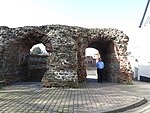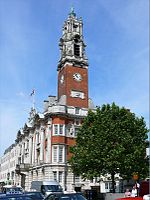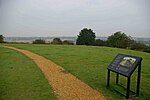Colchester Crutched Friary
Colchester (town)Essex building and structure stubsMonasteries in EssexUnited Kingdom Christian monastery stubs
Colchester Crutched Friary was a friary in Colchester, in the county of Essex, England. The house was founded in 1235, the friary was dissolved in 1538 and the site was discovered in 1928 when pottery was found when 44 Crouch Street was being demolished.
Excerpt from the Wikipedia article Colchester Crutched Friary (License: CC BY-SA 3.0, Authors).Colchester Crutched Friary
Crouch Street, Colchester
Geographical coordinates (GPS) Address Website Nearby Places Show on map
Geographical coordinates (GPS)
| Latitude | Longitude |
|---|---|
| N 51.887536 ° | E 0.89189691 ° |
Address
Greenwood
Crouch Street 42
CO3 3HH Colchester
England, United Kingdom
Open on Google Maps









